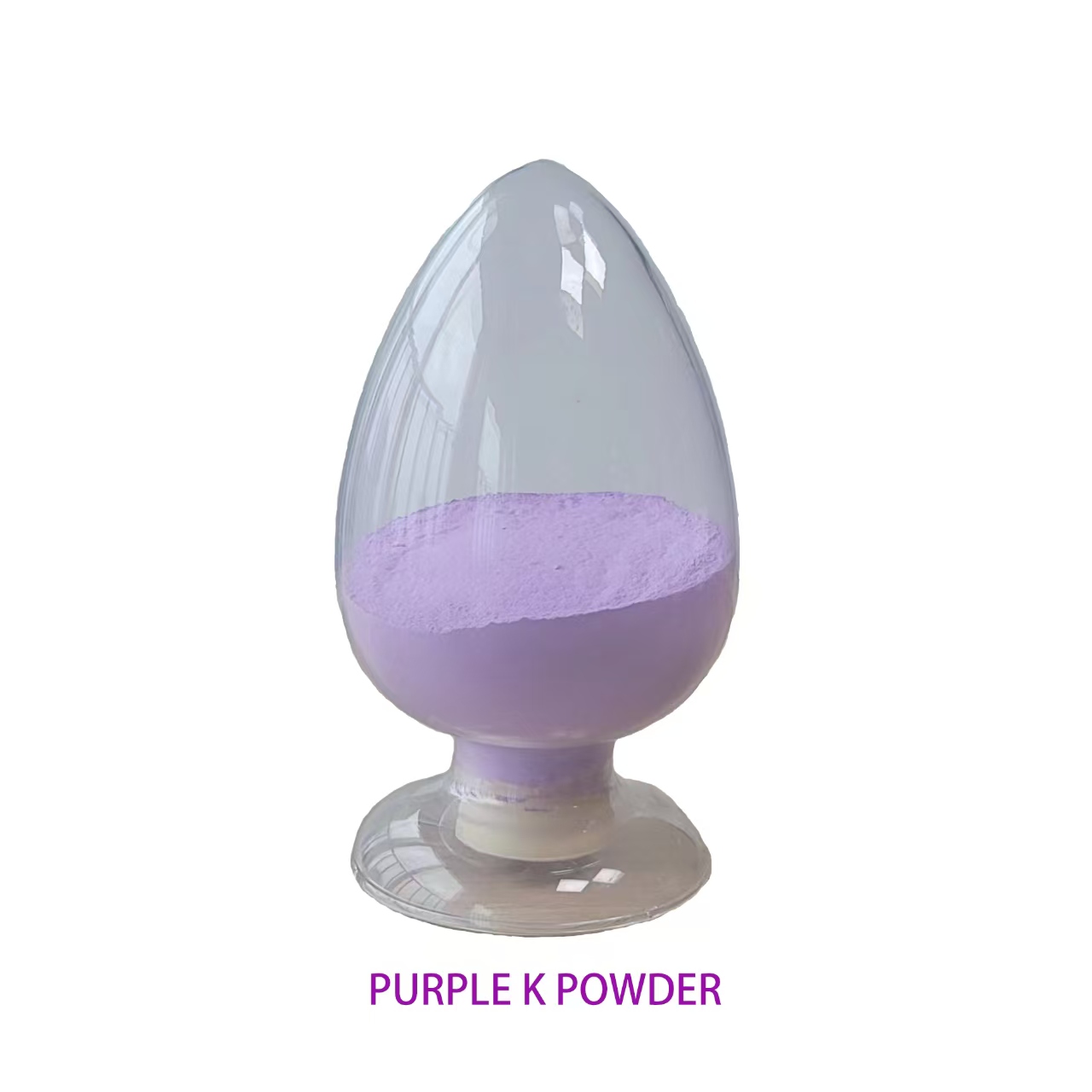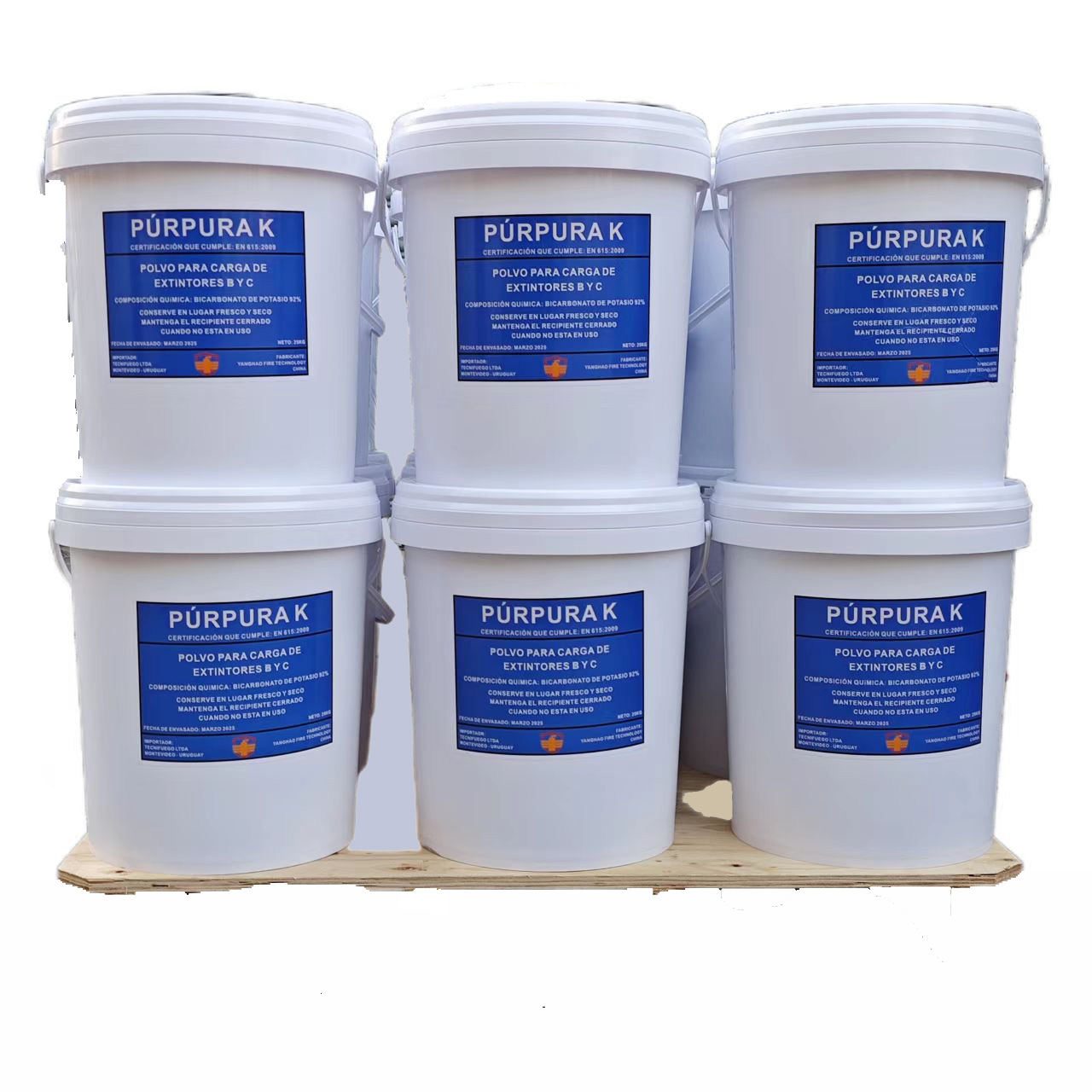Detailed Analysis of Purple k and K type Wet Chemical Fire Extinguishing Agents
In the realm of fire safety, selecting the appropriate fire extinguishing agent is paramount. Two prominent agents are Purple K and K-type wet chemical, each tailored for specific fire classes and applications. Understanding their differences, applications, and compatibility is crucial for effective fire suppression.
What Is Purple K?
Purple K is a dry chemical fire extinguishing agent composed primarily of potassium bicarbonate (KHCO₃). It is renowned for its efficacy in combating Class B (flammable liquids) and Class C (gas) fires. Purple K is approximately 4 to 5 times more effective against Class B fires than carbon dioxide and more than twice as effective as sodium bicarbonate.
The agent works by interrupting the chemical chain reaction of combustion, effectively suppressing the fire. Its purple color distinguishes it from other dry chemicals, and it is electrically non-conductive, making it suitable for electrical fire (Class E ) scenarios too. Because Purple K is particularly effective against liquid fires, it can also easily deal with oil and fat fires in the kitchen. In some places, the "K" in Purple K is also understood as the "K" in Class K fires.
|
|
What Is K-Type Wet Chemical?
K-type wet chemical is specifically designed for Class K fires, which involve cooking oils and fats. These extinguishing agent utilize a potassium acetate-based agent that suppresses fires through a process called saponification, where the agent reacts with the cooking oil to form a soapy foam that cools and smothers the fire . This method is particularly effective in commercial kitchens where high-temperature cooking oils are prevalent.
Key Differences Between Purple K and K-Type Wet Chemical
Feature | Purple K (Dry Chemical) | K-Type Wet Chemical |
Primary Use | Class B and C fires (flammable liquids and gas) | Class K fires (cooking oils and fats) |
Agent Composition | Potassium bicarbonate (KHCO₃) | Potassium acetate-based solution |
Fire Suppression Method | Interrupts chemical chain reaction | Saponification (formation of soapy foam) |
Electrical Conductivity | Non-conductive | Non-conductive |
Cleanup | Requires thorough cleaning due to residue | Easier cleanup with minimal residue |
Application Areas | Industrial settings, laboratories, fuel stations | Commercial kitchens, restaurants |
Can Purple K and K-Type Wet Chemical Be Used Together?
Mixing Purple K with K-type wet chemical agents is not recommended. The chemical compositions and suppression mechanisms differ significantly. Combining them could result in reduced effectiveness or unintended chemical reactions. It's essential to use the appropriate extinguisher for the specific fire class to ensure optimal safety and fire suppression .
Conclusion
Both Purple K and K-type wet chemical play vital roles in fire safety, each tailored for specific fire classes. Understanding their differences and appropriate applications ensures effective fire suppression and enhances safety in various environments. Always consult fire safety professionals to determine the best fire extinguishing agents for your specific needs.



